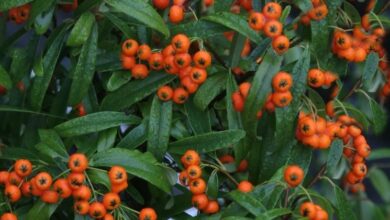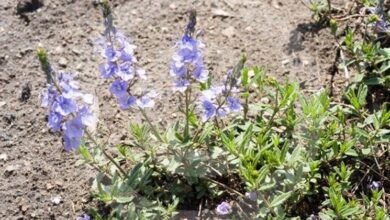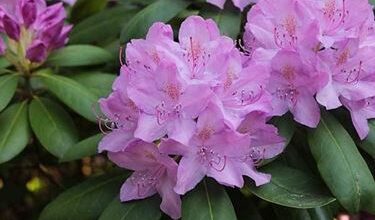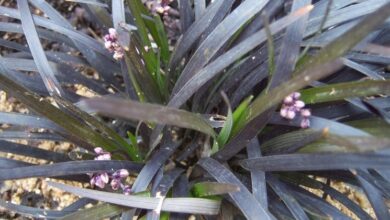Dulcamara (Kalanchoe Gastonis-Bonnieri)

The Kalanchoe gastonis-bonnieri is a perennial plant of the Crassulaceae family, of rapid growth that can reach up to 45 cm in height . The flowers of the plant are very distinctive, attracting hummingbirds, butterflies, bees and other insects to the garden. In addition to being one of the favorites in gardens, it is also popular for its medicinal properties.
Characteristics of the Kalanchoe gastonis-bonnieri

It has formidable ovate-lanceolate leaves up to 50 cm long. These are green in color covered with a waxy white color that gives it a grayish-green appearance, with brownish-looking spots; they also have the particularity of having small seedlings along the edge of the leaf.
Its inflorescence occurs in the fall and develops a stem up to 90 cm high that is divided in its upper part with several groups of pale shoots that later darken, to become the cups that support the reddish petals with flared tips and yellow interior..
Origin and habitat
It is a plant native to the northwest of the island of Madagascar, which is currently present in the southern hemisphere; South America, Africa, Asia, Oceania and others. In the wild it can be seen in the calcareous rock areas of tropical forests.
Cultivation and care
The kalanchoes are relatively easy to grow and flowers are very nice for their color, as well as firmness. There are those who mistakenly put them aside, once flowering is complete, which can be a mistake.
You just have to cut the flower head and then allow the plant to rest in a little water and resume its care in the usual way. The plant blooms naturally in the spring. However, some professionals manage to make it bloom throughout the year.
The plant is open and sunny, mainly during its growth stage in summer. In winter and if it is in a closed space, it is important to place it near a window located to the south . Watering should be done sparingly during the summer and further reduced in winter.
Between waterings you must allow the surface of the soil to dry well. Be attentive to the faces of the leaves, to supply water. At no time allow the plant to be exposed to temperatures below 12º C. In summer, apply a liquid fertilizer up to twice a week.
They adapt well to poor or rocky soils. If you want to plant in pots, you can use cactus soils or soils for flowering plants mixed with sand. The species multiplies easily; by seeds or cuttings. As for trimming the plant, it is a more appropriate technique for the home due to the comfort that it entails.
Applications
Much has been said about the medicinal properties of the Kalanchoes and in the present case, the Kalanchoe Gastonis-Bonnieri, is widely used in traditional medicine. Its leaves are used to soothe headaches and the symptoms of colds and flu; in the treatment of bug bites, bruises, burns, cuts and ulcerations.
The scientist Josep Pámies recommends its leaves for the treatment of cancer. In those cases that it affects the skin, it can be applied directly on the surface of the tumor, it can also be consumed.

In the countries that make up the southern hemisphere of the planet, in addition to the aforementioned treatments, its leaves are used internally and externally, to treat various diseases such as; deep wounds, infections, rheumatism, inflammations, hypertension, stones and diarrhea. In relation to psychiatric illnesses; schizophrenia, panic and fears.
If you plan to give Kalanchoe gastonis-bonnieri medicinal use, it is recommended to consult a doctor since its consumption can be harmful for the following reasons:
- It is not recommended to consume during pregnancy or when it is suspected, because this plant can stimulate contractions and consequently cause abortion.
- Prolonged use is not recommended.
- They have bufadienolide content, which are cardiac glycosides, so that those patients who present or present cardiac pathologies need to consult their doctor.
- Laboratory studies showed that Kalanchoe consumption can be toxic in doses greater than 5 grams per kilogram per day.




